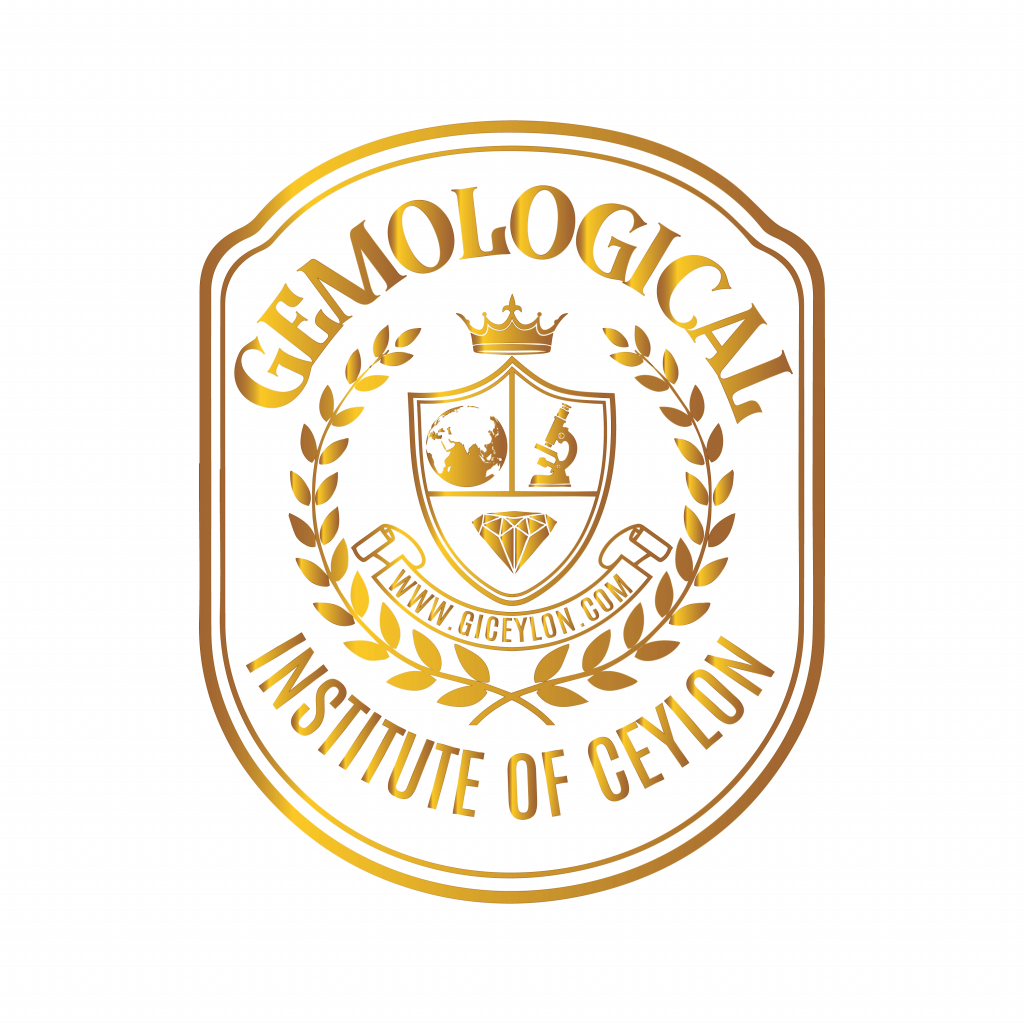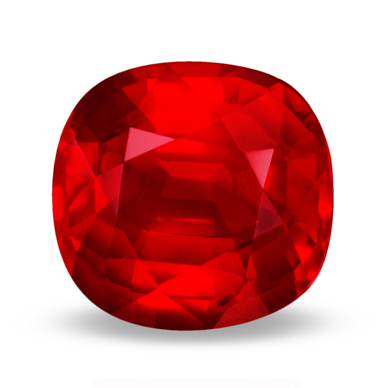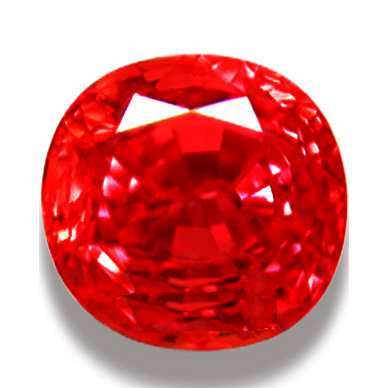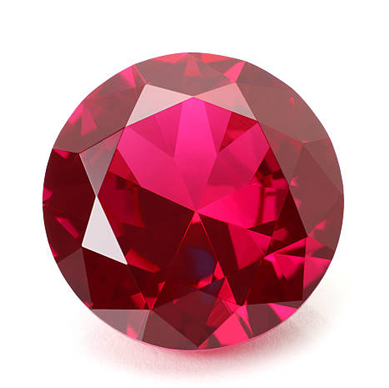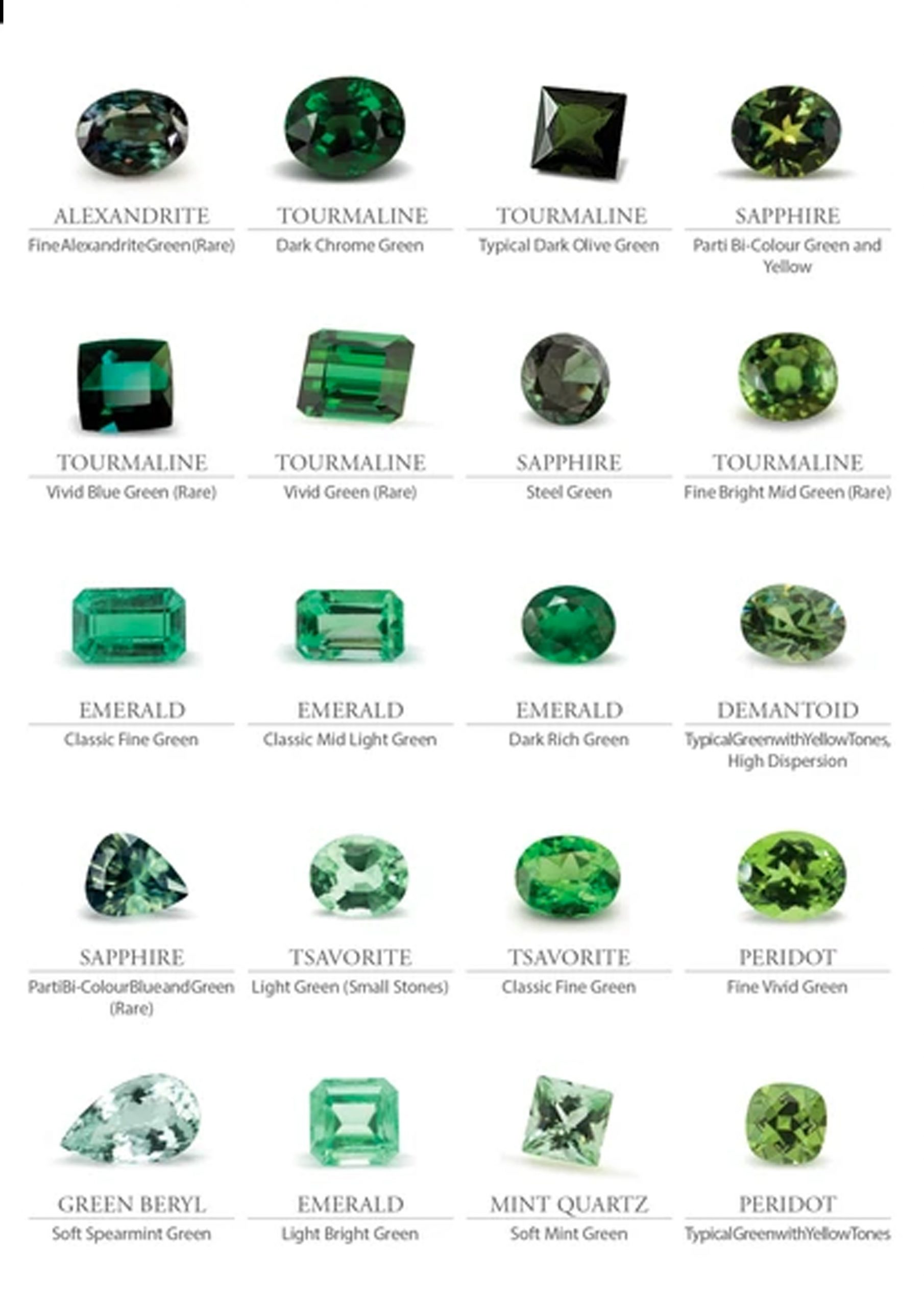Education
Gemstone Color Grading – Do it in a stable way and win the color grading 100%
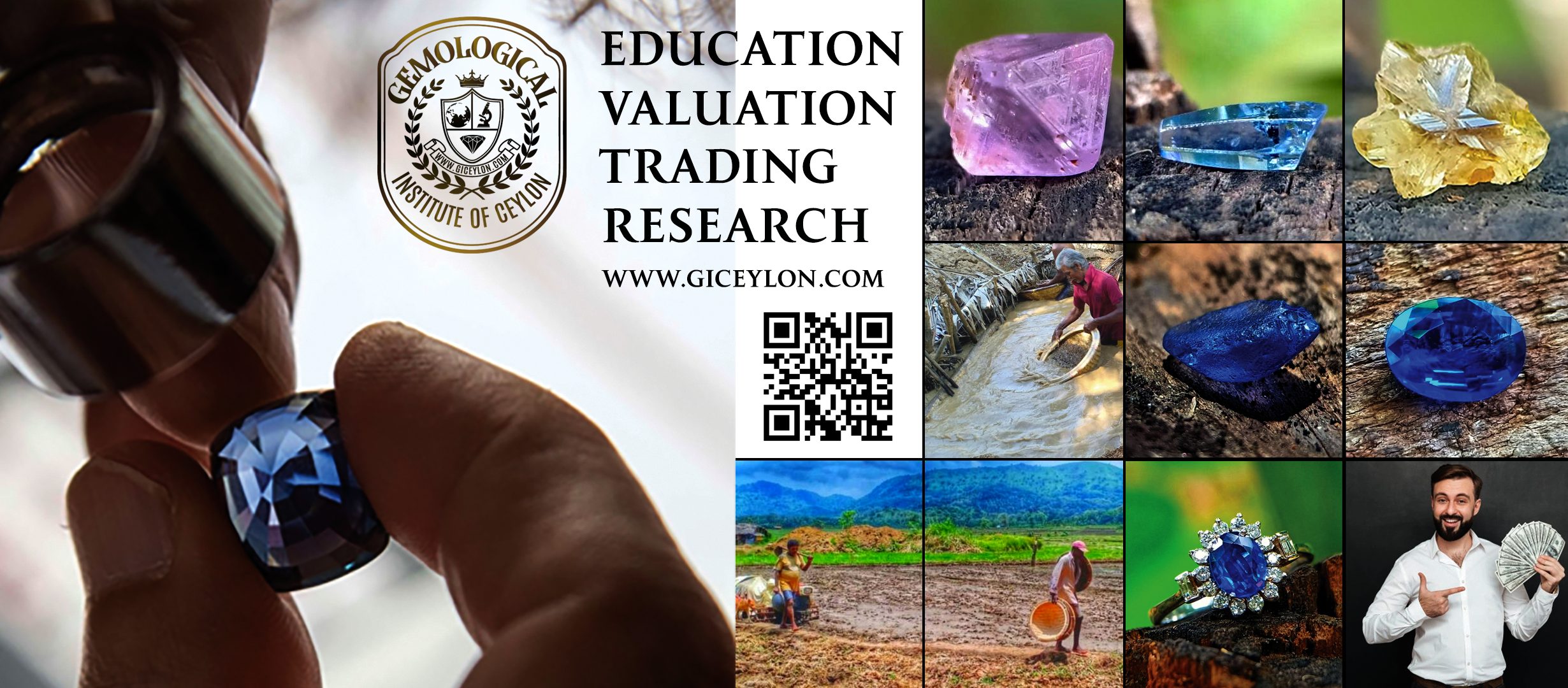 Gemstone Color Grading – Hue, Tone, and Saturation
Gemstone Color Grading – Hue, Tone, and Saturation
Color is a critical factor in grading gemstones. Subtle variations in value can make a significant difference. Inexperienced gemologists must develop the ability to accurately describe colors. Numerous color description systems exist as a result of the highly refined methods developed by industries that deal with colors. Certain gemologists employ the Munsell system, which is widely used in the photographic industry.
Additionally, the gem industry has developed several systems. (It appears as though someone comes up with a new method every year.) Only the Gemological Institute of America (GIA) system, on the other hand, has achieved anything approaching widespread acceptance. Due to the fact that it is required of all GIA students, this system has the largest user base. Nonetheless, the colored stone industry has opposed its adoption as a standard. What is the issue? Establishing a standard will alter the current value of a large number of colored gems. For instance, the value of all rubies of a particular tone and hue may decline. This would be catastrophic for anyone in possession of such stones. The grading of colored stones is far too complicated for a straightforward system like that used for diamonds.
There are numerous ways to describe and grade the color of gemstones. We’ll begin with one of the most straightforward, but most effective, methods.
The Inverted “U” Method for Gemstone Color Description
The inverted “U” is one of the earliest methods of depicting the value of gems. While not as sophisticated as the GIA system, it effectively communicates how gem color affects value.
This method assigns a percentage to gem color ranging from 10% (colorless) to 90% (opaque).
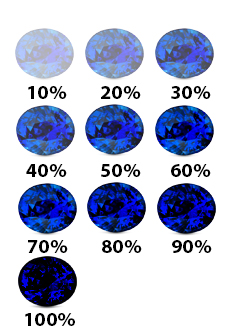
Colored stones achieve their greatest values between 40% and 60%, as shown in the graph below. Diamonds, on the other hand, have the opposite impact. The higher the value, the less color there is. The value of diamonds decreases as they become colored. The value of a fancy-colored diamond, on the other hand, skyrockets.
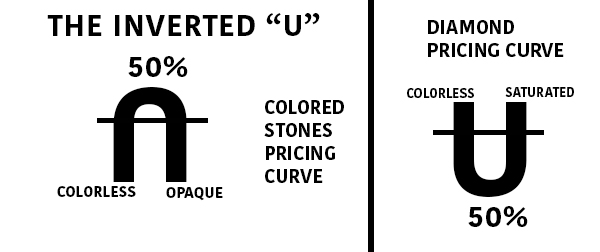
This gem color system, while handy, has certain limitations. To begin, it mixes tone and saturation, both of which have unique value impacts. Second, it ignores the color of the stone. Greenish blue, for example, may not be as valuable as pure blue. Third, these prices do not apply to all stones equally. For example, few aquamarines would ever reach 40% of their original value, whereas sapphires can reach 70% of their original value.
When grading a group of stones from a single source, on the other hand, the inverted “U” approach comes in handy. If you’ve received a large number of stones from a cutter, sort them by color grade using this approach. If you’re working with a group of iolite, for example, you can quickly check which ones have the highest value and which ones are outside the peak range.
The Gem Color System of the Gemological Institute of America (GIA)
One of the greatest systems for describing gem color is the GIA system. However, keep in mind that some of your business contacts might not be able to use or accept it.
Gem color is made up of three elements: hue, tone, and saturation. To accurately define a gem’s color grade, all three factors must be considered.
Hue
The term hue is the one we’re most familiar with. Red, orange, yellow, green, blue, violet and purple are the primary colors. Please notice that black, brown, and white are not included. While many people mistake these phrases for colors, they actually represent a lack of color rather than specific hues. (This is covered in the tone and saturation sections below.)
We define distinct colors as though they were compass points. Instead of referring to color as “SSE,” we describe it as “slightly yellowish orange.”
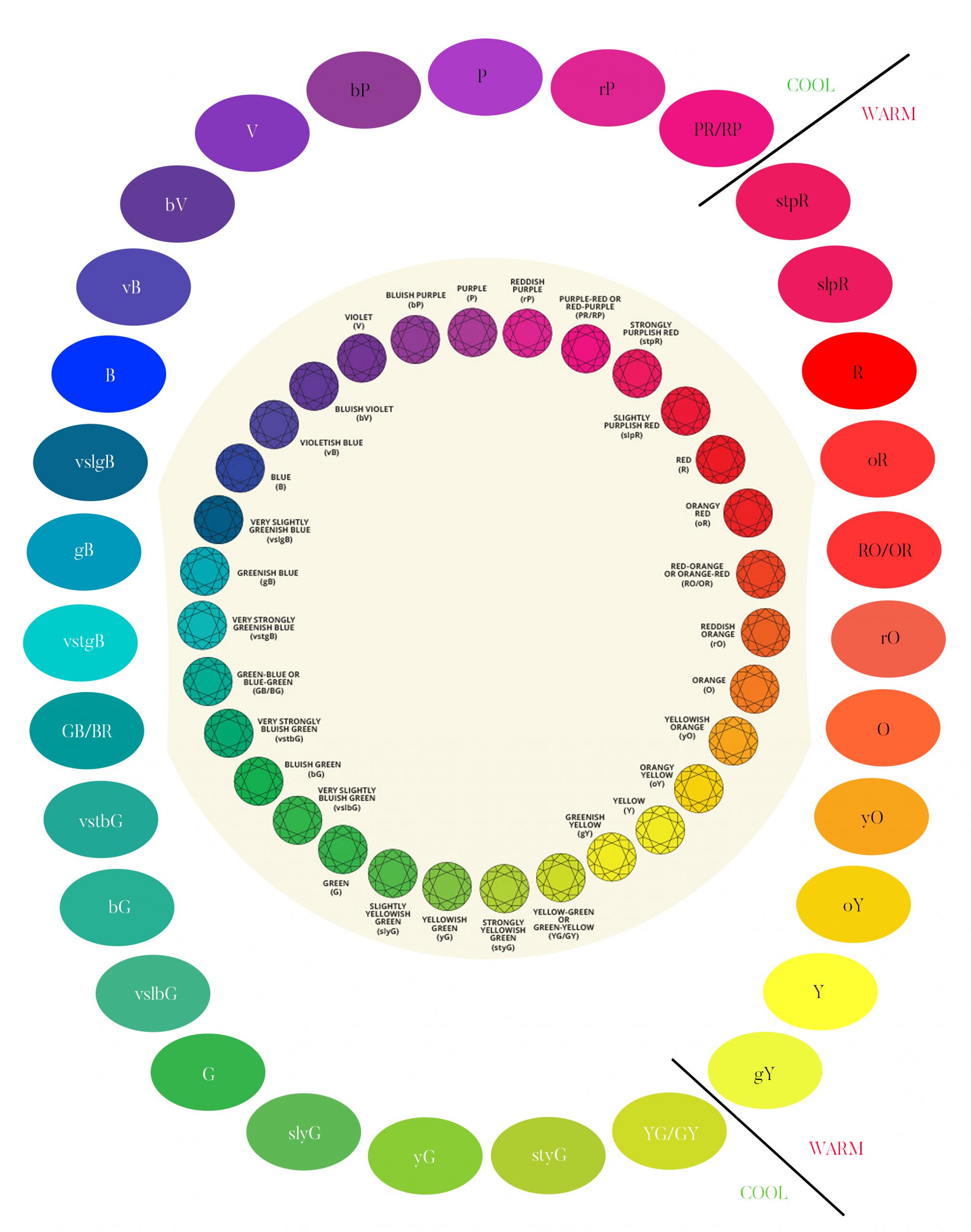
The primary color is always expressed last in this manner. It is preceded by descriptive phrases. Let’s start with the color yellow. It’s a pure color when written that way. We’d call it somewhat greenish Yellow if the color leans slightly towards green. If the green is more prominent, the color is described as a rich greenish-yellow. Green-Yellow or Yellow-Green is the color created when green and yellow are mixed evenly. (In an equal-opportunity situation, it doesn’t matter which color we list first.) We’d have intensely yellowish green, somewhat yellowish-green, and then pure green as we moved closer to the green. This pattern can be applied to any hue.
You’ll utilize a consistent approach for abbreviations and capitalization while drafting reports. The primary color should always be abbreviated and capitalized. All other letters should be written in lower case. The letters “sl” and “st” stand for “slightly” and “strong,” respectively. As a result, slvB denotes a somewhat violet Blue, while styO denotes a harsh yellowish Orange.
Tone

Tone refers to the relative lightness or blackness of a stone. We use the numerals 0 to 10 to express tone, which ranges from light to dark. 0 is colorless or white since it is so light. The number ten is so dark that it appears to be black. All stones have the same relative brightness/darkness grades.
The brightness of a faceted gem changes depending on the angle from which it is seen. When grading tone, looking down the table at the stone. It’s important to pay attention to this because it’s a regular procedure. When you look down on the table, you get the darkest view of any jewel. In other situations, it will be so black that the grade will appear incorrect. But keep in mind that we’re working with a standard. We must rate tone in all jewels in the same way for stability.
Extinction
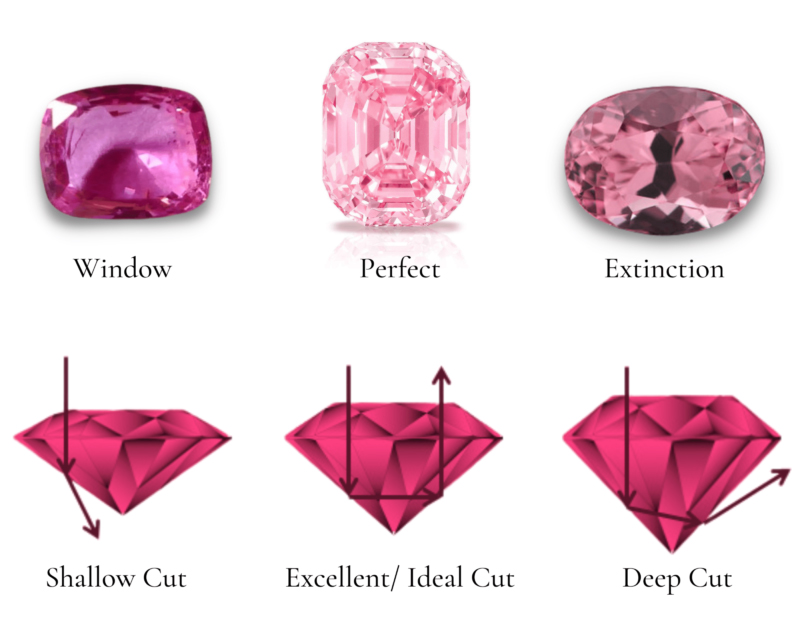 In extreme circumstances, the stone will turn entirely black when viewed from the front. The gem cutter made some poor crown facet angle selections, causing light to reflect back into the stone rather than escape through the crown. This is referred to as extinction. Extinct gems are the exception rather than the rule. To grade their tone, you’ll need to tilt them slightly. A rating of ten, on the other hand, denotes an opaque stone.
In extreme circumstances, the stone will turn entirely black when viewed from the front. The gem cutter made some poor crown facet angle selections, causing light to reflect back into the stone rather than escape through the crown. This is referred to as extinction. Extinct gems are the exception rather than the rule. To grade their tone, you’ll need to tilt them slightly. A rating of ten, on the other hand, denotes an opaque stone.
Saturation
The strength of a hue is referred to as saturation. Cool colors, such as blue and violet, become increasingly gray as their saturation decreases. As the saturation of warm colors like red, orange, and yellow drops, they become shades of brown. Black, brown, and white aren’t considered colors because of this.
There are six levels of color saturation. When discussing cool or warm colors, however, the descriptions differ slightly.
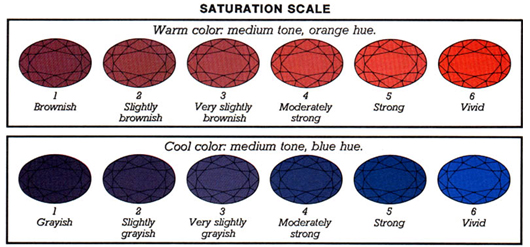
You must be able to tell the difference between tone and saturation. They’re two very different features. Higher saturation creates the impression of a lighter stone, as shown in the example above. All of the stones above, for example, have the same tone, which is 5 or medium. The ones with increased saturation, on the other hand, appear to be brighter.
Colored gemstones have different levels of saturation. The saturation of most gem species does not reach Vivid levels. This level is more likely to be found in outstanding rubies, sapphires, and paraiba tourmalines, however, it is rare. Emeralds have a maximum strength of five. Aquamarines have a maximum strength of 4 (Moderately Strong). When determining the value of jewels, keep this in mind. Rather of grading overall gem color, grade saturation per species. (Note that the term “Vivid” is also used to describe the color of fancy colored diamonds.)
Gem Values and Saturation
Understanding gem values requires full knowledge of saturation. The stones with the highest saturation levels receive the highest scores. The greater the effect of saturation on value, the more valuable the diamond. The prices of specific gem species are listed by color in our Gem Price Guide. The saturation of top-grade blue sapphires is 5 or 6. Sapphires of excellent quality have a saturation of 4.
While saturation is most noticeable in high-value gems, it has an impact on all of them. It’s the main reason why a carat of green tourmaline is worth $1,000 and another $200. The majority of tourmalines have low saturation. Only a few people make it to level 4 or 5. Africa has recently produced some really dark aquamarines. The majority of them have low saturation levels, which reduces their worth significantly.
Keep in mind that our color memory is terrible. While the difference between a blueish-green and a yellowish-green gem is easy to spot, tiny differences in saturation are difficult to spot without comparisons. Don’t rely on your recollection for hue when it comes to high-value stones. Carry comparison stones with you when you go shopping. This can be accomplished with some low-cost synthetics.
Examples of Gem Color Grading
Rubies have a maximum saturation of 6, whereas most gems have a maximum saturation of 4. The highest values are pure red or purple with a faint purple tinge. Rubies with a faint purplish tint have a higher value than rubies with an orange tint. Remember that your display won’t be able to recreate this amount of saturation, so the hue may be somewhat off. Only use these images for training purposes.
The color of the ruby in the image below is representative of a top Burma ruby. This color is known as “Pigeon Blood Red,” and it’s a somewhat purplish red. It has a powerful saturation of 6 and a medium-dark tone.
This ruby has a tone of 5 and a pure red color. Due to its softer tone, appraisers would deem it just shy of top color grade, despite the fact that it is a superb colored ruby.
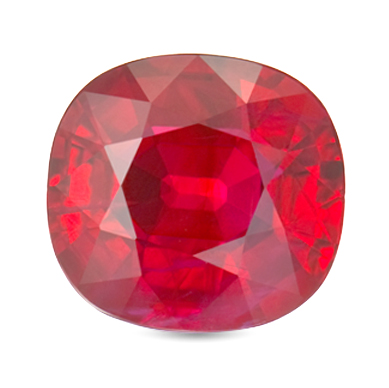
This pink ruby is now even lighter in color than the prior jewels. It has the same saturation as the pure red ruby above, but a tone of 4 instead of 5. This will aid in the differentiation of tone and saturation.
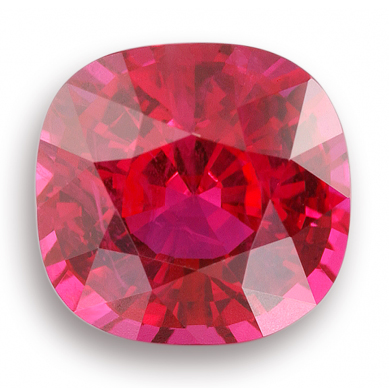
The next two gems don’t have completely pure colors. As a result, their values plummet more quickly. When viewed separately, each appears attractive to the inexperienced. A seasoned professional would almost certainly notice a difference. The difference between them becomes apparent only when they are placed side by side with a pure red stone.
Creating an Appropriate Setting for Gem Color Grading
Colors in the Room
Keep the walls white or neutral hues when setting up a space to grade gem color. Obviously, the color you perceive will be affected by light reflecting off a colored wall. The same issue can be caused by light passing through a colorful curtain.
Eyewear
Wear colorless lenses if you wear glasses. Many people’s lenses darken as the light level rises. Low-cost alternatives include generic reading glasses and low-power magnifiers like the Optivisor.
Sources of Light
The single most crucial consideration is lighting. Natural, incandescent, and fluorescent lights all produce varying results when rating gem color. Organize your lighting such that you can only use one at a time. Even though it isn’t the major light source, a fluorescent ceiling light, for example, will have an impact on color. Set up your lights such that you can control them all from your grading table.
Light from the Sun
For gem color grading, you must have a window. Gems often change color or tone or show less dispersion when exposed to artificial light. You can’t accurately evaluate a gem if you don’t use natural light. You don’t have to grade everything by window light. You should, however, see if natural light makes a difference. Grading should ideally be done in a north-facing window. Any window can be used with the right shades. Most essential, examine your gem in natural, indirect light.
Because daylight is bright enough to overcome other sources, you usually don’t need to turn off your electric lights. If you have an electric light near the window, however, make sure it is shaded so it does not interfere with your grading.
Incandescent
While filtered sunlight is still the greatest light source, you can get by with incandescent light (either conventional or “daylight equivalent”) for most of your work.
Fluorescent
Fluorescent lighting is the least acceptable source since it trends heavily toward the yellow end of the spectrum. Under fluorescent light, a number of the stones you’ll likely study will have artificial color. This poses a severe difficulty for gem color grading. If your ceiling lights are fluorescent, turn them off when grading.
Please keep in mind that there are various different varieties of fluorescents available currently. Each has its own set of outcomes. Compact fluorescents, like soft white or “daylight equivalent” bulbs, do not have the same spectrum as regular long bulbs. If at all possible, avoid fluorescents except when looking for color change. Even yet, keep in mind that different types of bulbs may produce varied effects.
A Word on Color Change Phenomena in Gemstones
All of your gems must be checked for color changes. Make sure you have a range of light sources on hand for this.
Brightness
When it comes to color perception, brightness may make a big difference. A bright light will help you see the colors more vividly in dark stones. Too much light, on the other hand, will make it difficult to see the hue of a light-toned diamond. You can control the brightness of your light in two simple methods. To begin, slide the diamond closer to or away from the light. (This is the most straightforward technique.) Second, use a white towel or tissue to diffuse the light.
Procedures for Gem Color Grading
You’re ready to take your exam once you’ve prepared your grading area. Clean the stone before you begin.
Initial Examination
Hold the gem over a white surface with tweezers for a first inspection. Next, place the gem near a window and instantly shine an incandescent light on it. After that, place it close enough to the incandescent light (in the shade is optimal) that it is the only light shining on the gem. Make a note of any changes you see.
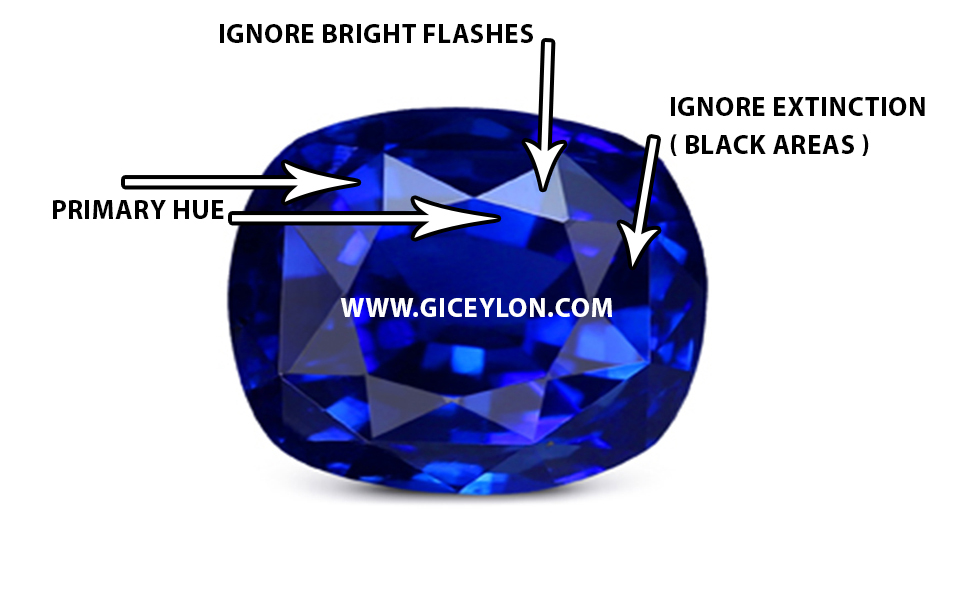
Describe the color scheme.
Begin by deciding on a primary color. Ignore any dispersion, as well as the brightest and darkest spots.
main hue – gem color
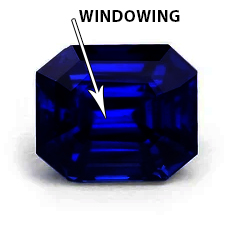
Dark stones might be difficult to work with at times. Tipping the stone until it windows is a good idea. The color of the “window” is usually your primary color. Nonetheless, examine the stone from the top to make sure.
windowed area – gem color
Be as specific as possible when describing the hue. Very little purplish-red isn’t considered “Red” in gem color grading. Grayish or brownish tones should be avoided at all costs.
This is a little tough at first, so compare with color masters. Your color masters can be low-cost synthetic gems, a GIA Gemset, or paint store color samples. Just make sure you’re comparing true hues.
Define the tone
After that, explain the tone. Remember to stare at the stone with your back to the table. Remember to look at master stones from the same angle if you’re using them.
Saturation should be described in detail.
After you’ve chosen the tone, look at the saturation of the stone. Think in terms of grayish or brownish to do this.
Remember that a darker stone seems lighter when the saturation is higher, and vice versa. So, when judging saturation, keep the tone in mind.
Creating a Color Description for Your Gem
The color should come first, followed by the tone, and then the saturation.
A rhodolite garnet, for example, might be described as stpR, 6/4. Strong purple Red, tone 6, and saturation level 4 are the results.
Don’t Put Your Trust in Illustrations
You can use the graphic from the section “The GIA Color Grading System” for grading tone.
However, don’t use the color and saturation illustrations in this article for grading. There are far too many variables in color reproduction to guarantee hue accuracy.
Worse, a computer monitor is incapable of reproducing high or vivid saturation levels. You’ll need comparison stones for this.
gemstone color grading methods are a bit different in some laboratories and they use their own systems in some places and countries.
gemstone color grading is critical and a must for gem traders and gemologists to win the trade
Gemstone Color Grading
Article Composed by :
සම්පත් සමරසේකර
Sampath Samarasekara
Chairman: Gemological Institute of Ceylon
Chairman: Youth Gem Professionals Association
Chairman: Sampath Gems
Director: Ceylon Sapphire Gems and Jewels
Director: Ceylon Gem Fair International
Chairman: Nanosoft Web Develop Company
Direct WhatsApp: https://wa.me/message/2A4AUALYVQWRA1
Join with Gemological Institute of Ceylon for Practical Gemology Studies
Facebook Page: https://www.facebook.com/giceylon
Facebook Group : https://www.facebook.com/groups/1990653001208203
Facebook Profile : GI Ceylon
Websites :
www.giceylon.com
www.bluesapphire.lk
www.gemluck.com
www.buyroughgems.com
www.ceylongemfair.com
Join with Gem and Jewellery Business Help and Discussion Group on Telegram :
https://t.me/joinchat/Q5cLnxilNw4xAr8T3TumfA
